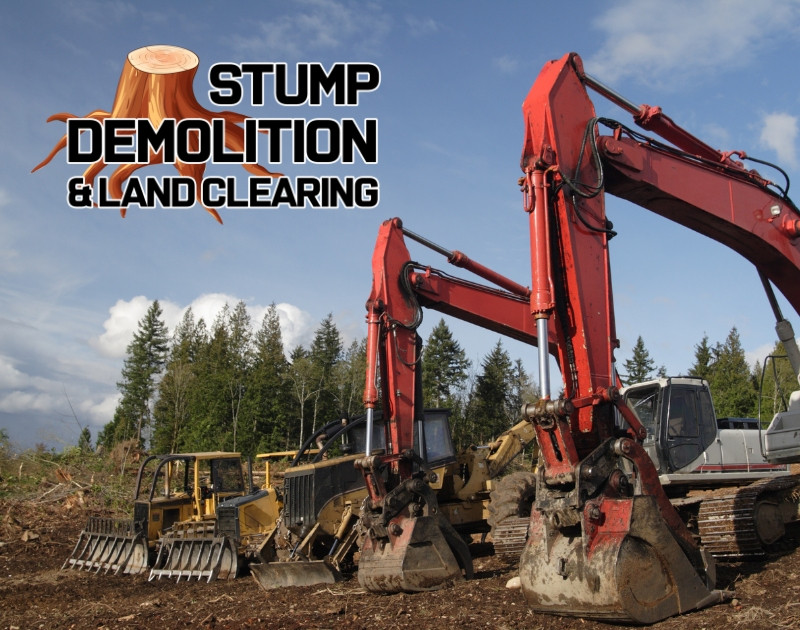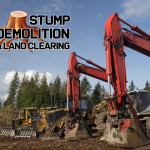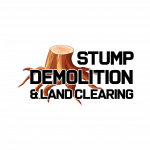Why it Matters: Right of Way Clearing

If you own property in Michigan, you have certain responsibilities and limitations. If a public road runs through or beside your property, for example, the county or state will likely have access to a certain distance into your property, for the sake of road safety and utility maintenance. Right-of-way clearing—reducing the brush and growth within the right-of-way area—is an important safety measure. In some cases, it can be part of your duty, as a property owner, to keep it clear.
Here, we’ll look at both right-of-way clearing and easement clearing to understand how they work and how you can keep up with your duty as a landowner.
What Is A Right Of Way?
Right of way is related to public roadways, as well as non-road infrastructure, such as gas lines, water and sewer pipes, sidewalks and paths, and poles used for electricity and telecommunications. The right of way is the space on either side of the infrastructure that allows for repair, maintenance, drainage, and in the case of roads, a safe recovery area for cars and trucks that need to pull over.
In Michigan, 75% of the roads are controlled by county road agencies, which typically have 66 feet of right of way, from one side of the road to the other. While right-of-way permissions were originally set up in the 1930s, when electricity was first delivered to rural Michigan, it remains in effect today. County road agencies in the state oversee more than 31 billion square feet of right of way.
Many counties prohibit the placement of common structures or general use of the right of way. For example, you are unlikely to be permitted to plant trees, bushes, or shrubs, or to install a retaining wall, landscaping, structures, or fences in a right-of-way space. Often, these things will be removed at the owner’s expense.
What Is An Easement?
In Michigan, an easement is a legal right to use someone else’s property for a specific reason. Often, they are used to provide one landowner access to their property through another person’s property. Examples of easement use include:
- Access to a landlocked property
- Shared driveways, whether residential or commercial
- Access to and from a lake or waterway from a property not on the water
- Access for utility companies to reach their lines and towers
Generally, the person or party using the easement is responsible for maintaining the property. This includes land clearing for safe roads, utilities, or infrastructure access.
What Are Easement And Right Of Way Clearing?
As you can imagine, it is important to maintain the right-of-way property around roads and easement areas. If trees, bushes, and shrubs become overgrown around roadways, safety is an immediate concern. Not only would vehicles have more difficulty pulling over, but visibility would be greatly reduced. Inherent hazards would include animal crossings, dangerous corners, and even reduced ability for proper road clearing in the winter.
Similarly, if easements for utilities become overgrown, it will take more time to reach the utilities, and repair work can be hampered. In the case of an emergency, whether for electricity, gas lines, telecommunications, or sewer, overgrowth creates a significant hazard.
Right-of-way clearing and easement clearing remove unwanted trees, brush, or other vegetation from the property. In some cases, bushes and tree limbs or branches are pruned back to create ease of access, but in other situations, trees, stumps, bushes, and roots are fully removed, to keep the area clean and help prevent it from growing back.
Where utilities are being installed, right-of-way clearing is critical. It creates the mandatory space required for roads to be built or utilities to be installed. Only with a clear view of the land, and with easy access for digging and leveling, can the infrastructure be properly built.
Who Is Responsible For Right Of Way Clearing?
When it comes to questions of ownership and responsibility for maintenance, right of way and easement scenarios can be complex and often depend on the history of the land. In some parts of Michigan, rural residents may own up to the middle of the road, but the right-of-way distance still applies.
Often, the local or state government will take responsibility for right-of-way maintenance, to protect public roads or utilities. If you have questions about your property, it is best to start with a call to the County Road Association of Michigan or your local government office.
When it comes to easements, it is usually the landowner who makes use of the easement—travels over the property of another for access purposes—who is responsible for maintenance.
Whether you or a government body is responsible for the maintenance of a right of way or easement, the activities can include:
- Right-of-way clearing—removal of trees, bushes, brush, stumps, etc.
- Clearing ditches
- Mowing
- Debris pickup
Once you have a clear understanding of your responsibilities and legal rights, you will have confidence in the protocol and, where required, will be able to take action on your property.
Things To Consider
If you find yourself responsible for easement clearing or right-of-way clearing, there are several important things to keep in mind.
- Timing – Does the land clearing need to be done on a specific schedule? Will maintenance workers need clear access to the road or utility on a certain day? You will want to schedule your easement or right-of-way clearing, well in advance.
- Soil and ground protection – As you can imagine, when trees, stumps, and significant debris need to be removed as part of a land clearing job, heavy equipment is required. It is important to work with a land-clearing company that minimizes ground pressure, to protect asphalt, roots, and sensitive areas. In many cases, you may need to selectively remove trees and vegetation. Be sure to work with a company that has the flexibility to conduct utility easement and right-of-way clearing with care for the surrounding landscape.
- Schedule going forward – Whether you are a new property owner or have new responsibilities for easement or right-of-way clearing, once you’ve found a trusted team for the job, speak with them about a schedule for ongoing maintenance. While you may not need to remove trees or dig up stumps once the job has been done, with regular maintenance, the job will be smaller and more manageable.
Find The Right Team
When you need easement or right-of-way clearing work done, it is critical to work with an experienced team of experts. The right team will help to assess your property, identify potential hazards and reduce damage to your land. They can also advise whether clear-cutting or selective removal would be best for your scenario.
At Stump Demolition, we are committed to you and the well-being of your property. We serve southeast Michigan with a high work ethic, clear communication, and the highest quality work standards. We ensure our jobs are done on schedule and budget.
To get started, simply contact us. We will arrange a time to assess your property, including your options for easement or right-of-way clearing.
Business Name: Stump Demolition and Land Clearing
Phone Number: 248-688-8332
Primary Category: Excavating contractor
CID: 17493723989799983534
Business Profile ID: 4373570029587109095
Maps Link: https://maps.google.com/?cid=17493723989799983534
Search Link: https://local.google.com/place?id=17493723989799983534&use=srp
Website: https://stumpdemolition.com/
Place ID: ChIJ726Wz2UYLiYRrtnBckgxxvI
KG ID: /g/11sxyg_kgl
Latitude: 42.659913
Longitude: -83.3864155
Description:
At Stump Demolition and Land Clearing, we specialize in land clearing, debris hauling, and stump grinding & removal. Our experienced team of arborists can professionally handle everything from small residential properties to large commercial sites.
There are many reasons to choose Stump Demolition for land clearing services in Michigan. We have the experience and expertise to get the job done quickly and efficiently. We also use the latest equipment and technologies to ensure that your land is cleared correctly, with minimal impact on the surrounding environment. In addition, we offer competitive pricing and top-quality customer service.





